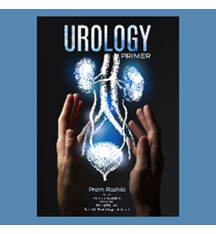2023 | Volume 24 | Issue 3

Author: Professor Peter Stanton
Anyone who has occupied a senior academic post will know what I mean by this. They are dreaded words encompassing the many committees and roles that automatically fall to your lot, and the many more that carry an ‘expectation’ that you will step forward. The work certainly adds up. Thus, it was when the Tasmanian Audit of Surgical Mortality (TASM) was set up.
Now that I have retired from practice, and therefore left the committee, I can reflect on my 20 years at TASM.
I believe it to be one of the more satisfying administrative processes that I was involved with—one that achieved measurable benefits for patients. We take that for granted in our clinical care, but committee work can seem ineffective and/or inefficient. This may drive many clinicians away from such work, but some of it is essential if clinical practice is to achieve what it is capable of or take place at all. It is often frustrating and must be squeezed around more urgent tasks, but it must be seen as an indirect way to get the best clinical outcomes. Someone has to do it, and it is least burdensome if the load is shared.
In 2003, when RACS and the Tasmanian government were looking to establish TASM I was ‘invited’ to be part of the committee. At that stage, I had been in Hobart for five years after a decade overseas in Glasgow. The Scottish Audit of Surgical Mortality was well established there and an obligatory part of the paperwork—setting up TASM was nothing new to me, so we essentially imported the Scottish model.
Tasmania was the second jurisdiction to establish an audit based on the Scottish model, following the lead of Western Australia, which began as a pilot project in 2001.
Setting up TASM was a collegial process. The state’s Department of Health was very keen on the idea, so TASM was established as a management committee within the department, which was quicker, simpler and cheaper than setting it up as an autonomous body. The potential downside, as seen by clinicians, was confidentiality—should information from individual cases be made available to the department. A firewall was included in the terms of reference, and laudably, the department never applied pressure to breach this and look for case-specific information. TASM has worked smoothly as part of the department, with codified independence and qualified privilege.
TASM had some relative successes in establishing the audit. We achieved consultant buy-in very quickly across all specialties—much easier in a geographically and demographically small state. There are only four public hospitals in Tasmania and virtually all surgeons have public hospital appointments, so can be accessed through that system. From the very start, the public hospitals agreed to report all deaths in surgical care to the audit. Buy-in by the private sector was also quickly accomplished. There is a small number of private hospitals (six hospitals run by only two operators) and surgeons working there were already engaged in the audit through their public work.
One downside of the small size of the Tasmanian surgical community is finding independent assessors for the audit. This wasn’t a great problem for first-line assessments, with a high proportion of surgeons in Tasmania agreeing to act as assessors. It has always been more difficult for second-line assessments. Anyone who has done such an assessment knows that it is an onerous task and fewer individuals have the time to volunteer for this. So, some cases are assessed outside of the state (with reciprocity), which is not necessarily a bad thing as it applies a degree of external normalisation.
Perhaps another driver was an awareness of the poor health outcomes of Tasmanians. Tasmania has the relatively oldest and most dispersed population of any state or territory in Australia, with a higher proportion of its population living in areas of disadvantage. More than half (57 percent) of Tasmania’s population lies in the lowest two quintiles of disadvantage of SEIFA (Socio-Economic Indexes for Areas), resulting in the nation’s highest burden of chronic disease, the highest prevalence of risk factors (e.g., smoking prevalence, high blood pressure) and generally the poorest health outcomes of any state in Australia.
Tasmania was the first state to incorporate deaths associated with anaesthesia under the audit umbrella, an initiative subsequently adopted in other jurisdictions. This is an obvious and synergistic relationship, but because the two specialties (surgery and anaesthesia) have separate governance, there was a bridge to cross. Maybe this is easier within smaller professional communities where everybody knows and works with each other. The same applied to the integration of gynaecological deaths into our audit. We were able to achieve what we did relatively rapidly and without contention.
As I see it, the first great achievement of the Australian mortality audits was the area of prophylactic anticoagulation, where they played a major part in creating the impetus that drove behavioural change. I think the surgical audits created a mindset of: how will this look if it ends up in the audit? Perhaps there is an element of Big Brother to this, but so be it—awareness was created. Although embolic deaths were and are very rare for an individual surgeon, they are always occurring somewhere, a reminder provided by the audit and associated educational sessions on this issue.
It is pleasing to see that the rate of prophylaxis assessed as inappropriate, has halved since introduction of the audits—a change that occurred quite quickly and has proved to be ongoing. Improved adherence to anticoagulation protocols is an outcome that alone would justify the establishment of the audits.
Another major systematic issue highlighted by the audits is that of patient transfer, both between hospitals and between teams within hospitals, and the closely related problem of handover. The state and national audit system has helped maintain attention on these areas within hospital administrations and health departments. And success with these broader issues may have had a halo effect, in creating thinking that if the audit could save lives in this way, then it was worthwhile and merited participation and attention to other more case-specific recommendations.
In summary then, involvement with TASM from the time of its gestation has been a rewarding experience. It has been gratifying to see advances in the quality, and organisation and administration of clinical care, which produced measurable improvements in outcomes. I have no doubt that these achievements will be maintained and extended by the next generation of surgical auditors.

